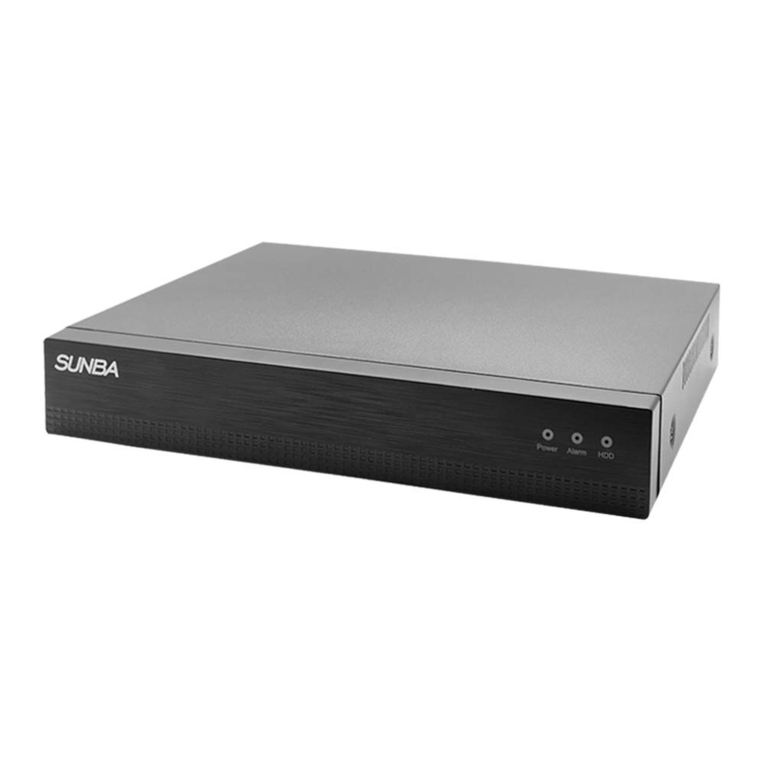
- 07 -
5.2 Network
The network setting page can be accessed from Main Menu-Network.
The network menu shows the current IP, submask, gateway, DNS, TCP port and http port
of the device.
DHCP is a network protocol that enables a server to automatically assign an IP address
to a network machine. We suggest assigning a Sunba NVR with a static IP address (by
default) and disable this function to avoid potential IP conflict especially if you have
multiple network machines connected to a same server (eg., a router or a switch). Also
do not enable DHCP if you set port forwarding on your server for external connection to
the NVR on the LAN.
Please make sure the NVR Gateway/IP Address matches the Gateway of the server
(router). For example, if the router IP is 192.168.0.1, you need to modify the Gateway of
NVR to 192.168.0.1 and IP Address to 192.168.0.X where X can be any integer between 2
to 255. However, no two devices on the same network shall share the same IP Address.
Make sure your NVR doesn’t conflict with other devices on the LAN Network. Failure to
properly configure the NVR network will affect remote access of the device.
Media Port: Same as TCP Port. Default is
34567. If modified, please power cycle
the device.
Http Port: Default is 80. If modified,
please power cycle the device. If this
value is modified, in the web browser,
users must login to the NVR using
http://IP:http port.
DNS: Domain Name Server that trans-
lates domain name into IP address.
It is recommended to set the DNS by the
same value as offered by your ISP.
Transfer Policy: there are three strategies: Self-adaptive, Quality preferred or Fluency
preferred. The video stream will adjust according to the setup. Quality preferred transfer
policy delivers best quality but the video may be lagged. Self-adaptive is the tradeoff
between quality preferred and fluency preferred. Fluency preferred and self-adaptive are
valid only when the sub stream is turned on.
Click NetService to open the submenus of network configuration.




























